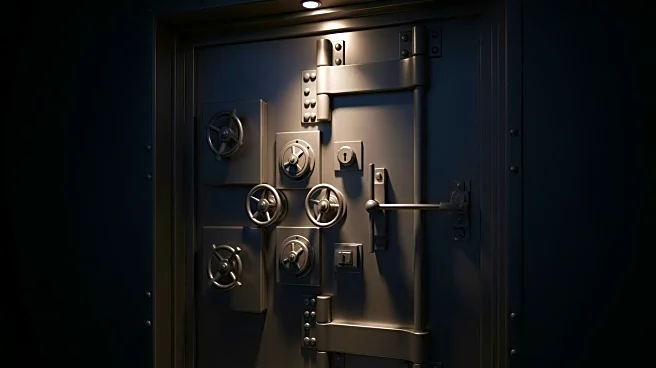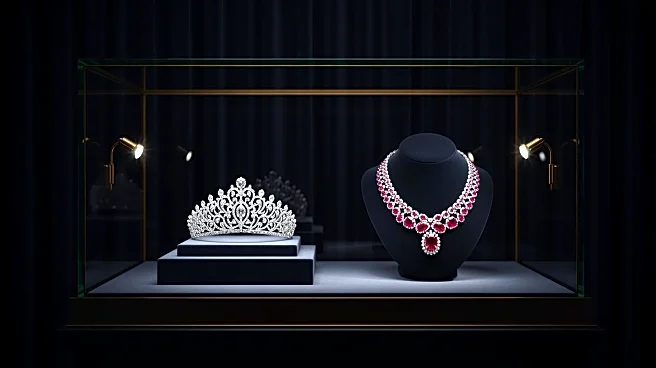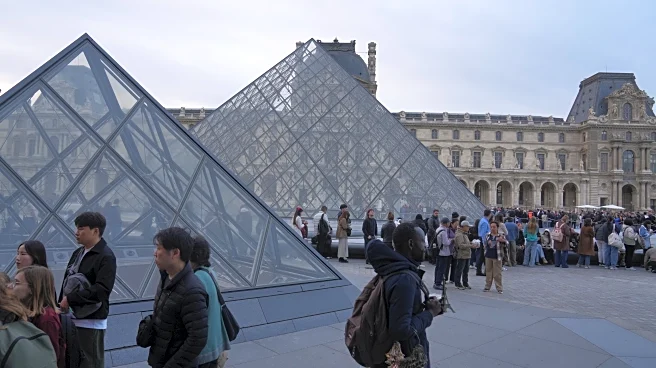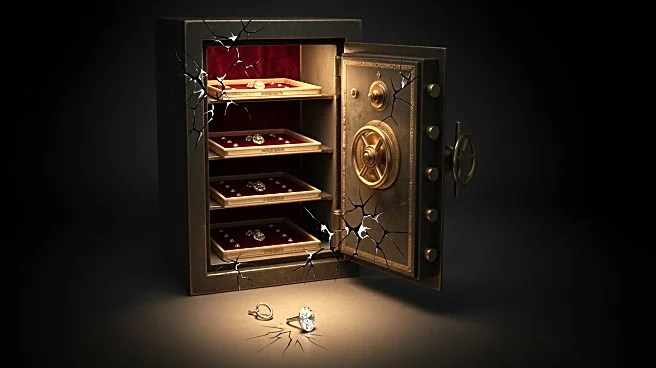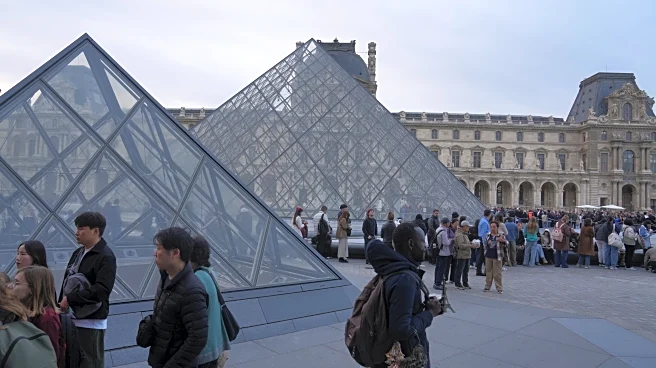What's Happening?
The theft of French crown jewels from the Louvre has sparked concerns among experts about the fate of these historical artifacts. Jewelry historian Marion Fasel expressed skepticism about the likelihood
of the jewels being broken up or melted down due to their historical significance and craftsmanship. The jewels, including Empress Eugénie's pearl tiara and Marie-Louise's sapphire diadem, are considered too elevated to be easily sold on the black market. Former FBI agent Ronnie Walker noted the challenges in transforming historical-cut gems into modern cuts for sale. The theft has prompted a significant investigation involving French police and private firms, with hopes of recovering the jewels.
Why It's Important?
The theft of such high-profile jewels has implications for the art world and security protocols at major institutions. It highlights vulnerabilities in museum security and the challenges in protecting valuable artifacts. The incident may lead to increased security measures and collaboration between international law enforcement agencies to prevent similar heists. The recovery of the jewels is crucial not only for historical preservation but also for maintaining public trust in cultural institutions.
What's Next?
The investigation is ongoing, with French authorities and private firms working to track down the stolen jewels. There may be efforts to offer rewards for information leading to their recovery. The case could prompt discussions on improving security measures at museums worldwide. Stakeholders in the art world may advocate for stronger international cooperation to combat art theft and ensure the protection of cultural heritage.
Beyond the Headlines
The theft raises questions about the motivations behind art crimes and the potential involvement of organized crime networks. It also underscores the cultural significance of the stolen jewels, which are not only valuable but also hold historical narratives. The incident may lead to a reevaluation of how museums balance accessibility with security, ensuring that cultural treasures remain protected while being available to the public.


